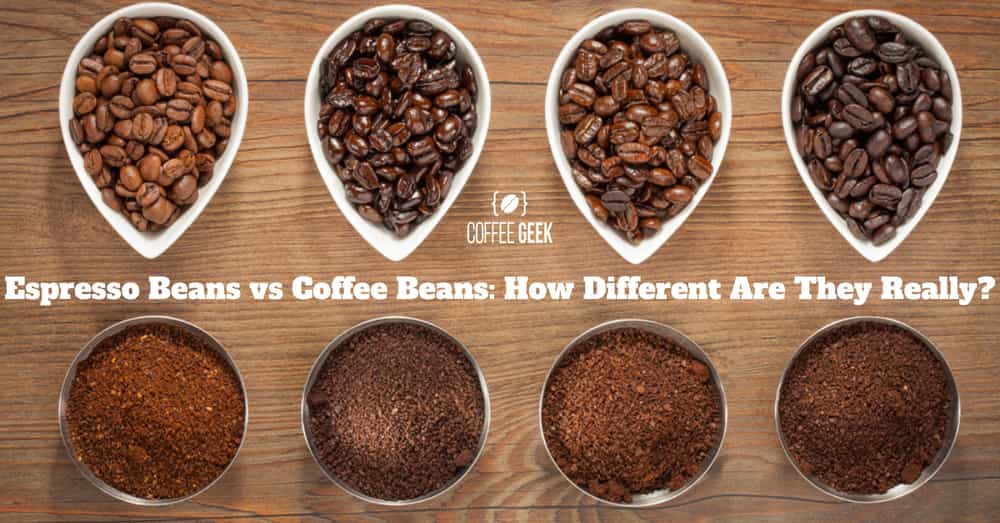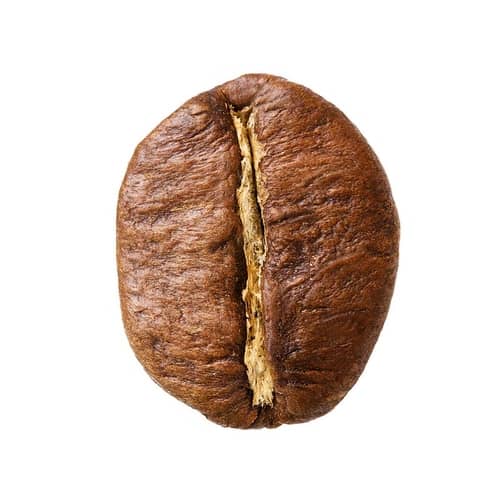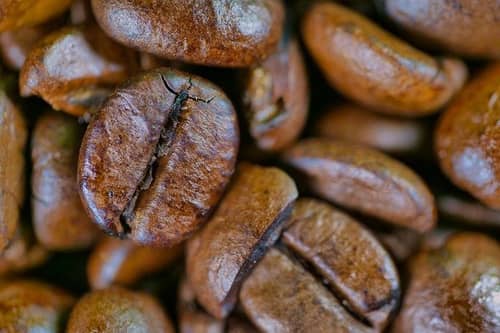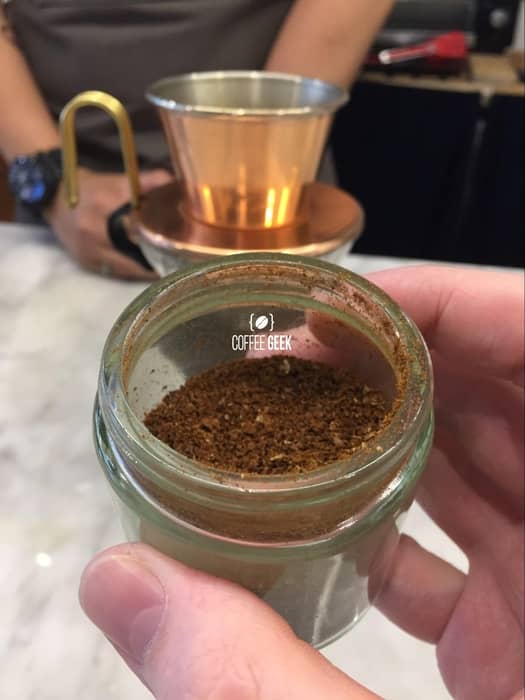If you like espresso and want to get into the habit of making it at home, you’re probably wondering whether you could use your regular drip coffee beans for the job.
Heck, many espresso home baristas may still wonder whether it’s really necessary to buy designated espresso beans. After all, it’d be really convenient and budget-friendly if you could use one bag for multiple brewing methods.
In this article, I will explain the differences between espresso beans vs coffee beans and help you find the answer to your coffee supply dilemma.
TL;DR: Espresso beans and coffee beans can have different blends, roasts, and grind sizes, but you can still use regular beans for making espresso if you want. Troubled by the conflicting conclusion? Read more to find out why!
What Is The Difference Between Espresso Beans And Coffee Beans?
Blend
For those who are new to the coffee scene, the 2 most popular types of beans in the market are Arabica and Robusta coffee.
Arabica beans, accounting for 70% of the market share, are generally referred to as the superior type.
But it’s not just because of their origin or commercial success.
They’re popular for their milder, lighter, and sweeter taste that boasts a higher acidity for a brighter and more flavorful brew.
Robusta beans, on the other hand, are less desirable because of their grainier and harsher taste and higher caffeine content.
That’s why a lot of bags of beans are promoted for containing 100% Arabica, be it for making espresso drinks or regular coffee drinks.
However, the traditional espresso shot is actually pulled with a blend of espresso beans containing both Arabica and Robusta coffee beans.
The common Arabica-to-Robusta blending ratio for these espresso beans is typically 80:20 or 90:10.
The sweeter and milder taste of Arabica when paired with the earthier and bolder taste of Robusta creates an interestingly strong coffee flavor, heavier mouthfeel, more pronounced crema, and bigger caffeine punch.
And those are traditionally favorable espresso coffee features.
What’s more, the addition of Robusta’s bitterness actually makes espresso shots pair a lot better with sweet ingredients like sugar, milk, cream, and syrups.
So, if you’re going the traditional espresso route, make sure to use a traditional blend of espresso beans. Start with a 90:10 blend to test your preference.
And, if you’re still hesitant to try because of Robusta’s inferior reputation, look for premium Robusta coffee beans.
They’re grown in stricter conditions to improve their gritty profile while still preserving the signature earthiness and toastiness.
You can try making drip coffee with some Robusta mixed in as well, but regular coffee beans will likely still prevail at the end of the day, simply because they’re more suitable for drip coffee machines.
Roast Profile
Another difference between espresso and coffee beans is the roast profiles.
Regular coffee beans for coffee-making devices like drip machines and Pour-Overs are usually light roast or medium roast beans.
But espresso beans call for dark roasted coffee beans because they have lower acidity and higher oiliness. This results in a great cup that’s more full-bodied, stronger, and darker with a less acidic taste.
Light-roasted beans and medium roasted beans just don’t have a shiny oily sheen that’s visible on dark roast coffee beans.
The espresso beans are roasted longer, leading to more cracks so coffee oils can escape to the surface.
So if you’re making one shot of espresso, make sure to grab a dark roast.
You can also pick bags labeled as “Espresso Roast” or “Espresso Beans”, which are standard dark roasted beans specifically made for brewing coffee with an espresso machine.
Grind Size
The last significant difference between espresso beans and regular coffee beans is the grind size.
Naturally, different brewing methods call for different grind sizes.
With an espresso machine, you need to use finely ground coffee beans that are tightly tamped into the filter basket in the portafilter.
This is because the espresso brewing method involves high pressure to shoot hot water through the coffee grinds in just 25 – 30 seconds.
If you use a coarser grind, the hot water will run through the espresso beans way too quickly, resulting in weak and diluted under-extracted coffee.
If you use a finer grind (such as extra-fine coffee grounds for Turkish coffee), the hot water will have a harder time making it through the bed of espresso beans.
And you end up with a bitter cup that’s over-extracted. You may even accidentally clog the portafilter and it won’t be pretty.
The drip extraction process to make a regular coffee pot only calls for medium ground coffee beans.
The average cup of brewed coffee will come out just right, not too strong or weak.
That being said, each person has a different coffee strength preference.
And changing the grind can affect the brewing process and help you achieve a cup that you’d prefer more.
So, if you think the fine grind for espresso and medium grind for drip brew can’t give you strong enough coffee, feel free to get the espresso and coffee beans ground finer. And vice versa.
Learn more about coffee grind sizes for different brewing methods to get an idea of what to expect.
Slowly experiment until you find your suitable drip and espresso coffee beans.
Just make sure to grind them right before brewing with a high-quality burr grinder to get the full distinct flavor each time.
If you haven’t invested in a coffee bean grinder yet, check out our recent top grinders to up your coffee game!
There are also espresso grinders in the market specifically designed for grinding espresso coffee beans!
Are Espresso Beans Stronger Than Coffee Beans?
Typically, yes.
The espresso grind is usually dark roasted beans that have lower acidic flavor compounds and more coffee oils.
Coupled with the espresso extraction that involves high pressure, the final cup is much richer, stronger, and more full-bodied than coffee made with regular coffee beans.
Do Espresso Beans Have More Caffeine Than Coffee Beans?
No, this is actually a common myth among coffee drinkers. The strong flavor of espresso causes many to think that the espresso bean, or dark roasts in general, has higher caffeine content.
But, a darker roast is actually roasted for longer so more of its original coffee compounds are broken down in the process, including caffeine, though not to a very impactful extent.
So, technically, a light or medium roast coffee bean would have higher caffeine content than darkly roasted espresso beans.
This must be a very surprising difference between espresso beans and coffee beans for many coffee fanatics.
So, basically, …
Do You Need Special Coffee For Espresso?
Yes and no as it depends on your personal preferences.
Yes, typically, espresso beans are roasted darker and can have different beans (Robusta) blended in traditionally.
But, no one is stopping you from experimenting with other types of coffee beans, either. In fact, many coffee aficionados are entertaining the idea of brewing espresso with light-roasted coffee!
What ultimately matters is getting the grind size right for the espresso machine and the brew right for your needs.
However, if you’re just a beginner, it’s a good idea to start from the norms before breaking them.
To Wrap Up – Espresso Beans Vs Coffee Beans
In short, espresso beans can be made with Arabica and Robusta blends and are typically darker roasted, giving them a less acidic flavor profile and lower caffeine content.
They’re also ground finer than coffee beans for drip brews. Due to the high-pressure extraction process, they yield a richer, stronger, and more full-bodied cup than regular coffee beans.
But, at the end of the day, feel free to use whatever type of coffee beans when making espresso or drip brew, as long as the coffee machines and you are fine with them.
If you want to learn more about this topic, check out how espresso is different from a regular drip!
FAQs
What Beans Does Starbucks Use For Espresso?
Starbucks uses its proprietary Starbucks Espresso Roast for making its espresso. It’s a blend of the best beans sourced from Latin America and the Asia Pacific that are 100% Arabica.
What Grind Is Best For Espresso?
A fine grind is best for the espresso brewing method.
Is Dark Roast Same As Espresso?
No, there are more types of dark roast than just espresso bean, such as Viennese Roast, New Orleans Roast, or French Roast.
What Beans Are Good For Espresso?
You can use either 100% Arabica for a specialty quality brew or a blend of both Arabica and Robusta (80:20 or 90:10) for a true espresso in the traditional sense.
Can I Use Regular Ground Coffee For Espresso?
No, espresso beans and coffee beans require different grind sizes (fine vs medium size). However, you can use the same type of whole bean coffee. Just make sure to get the grind right for the method.








